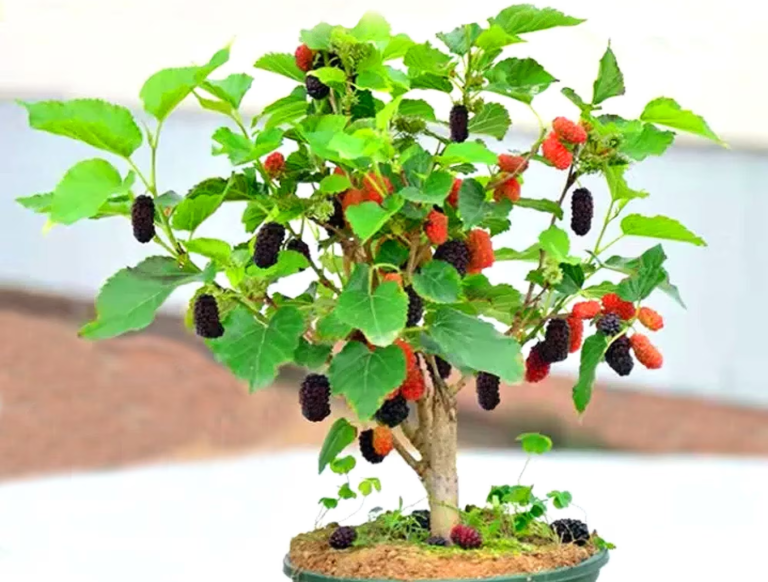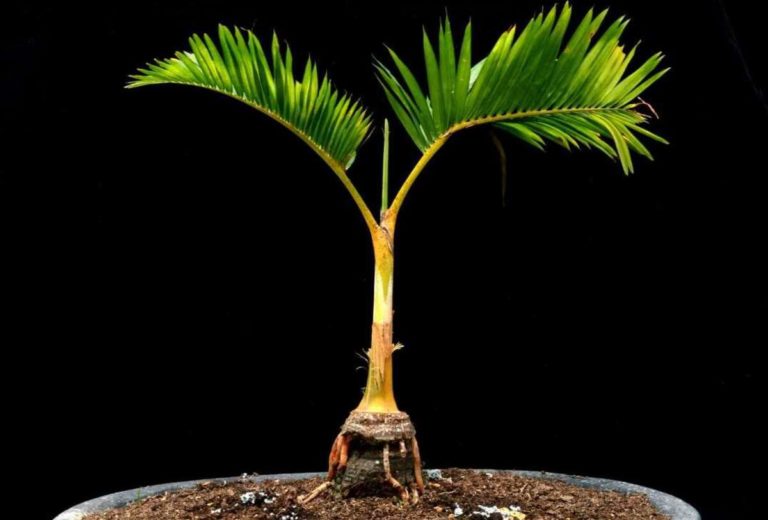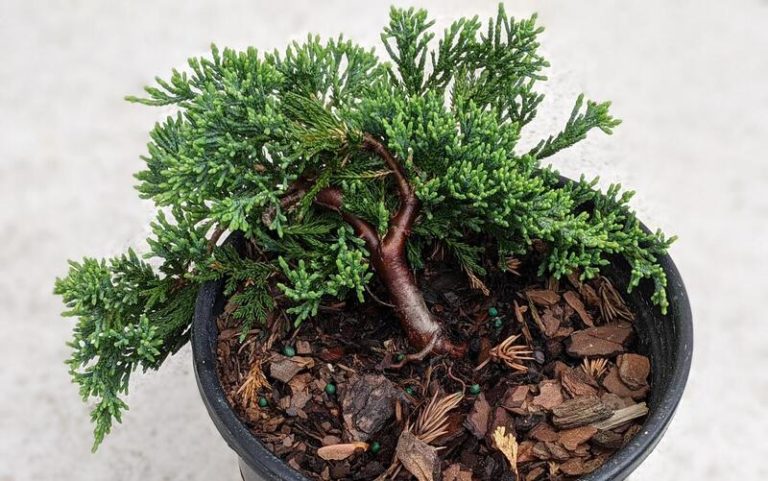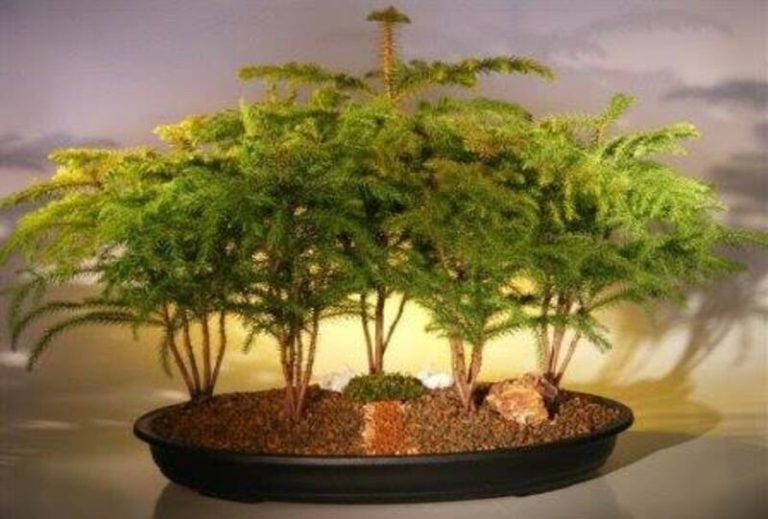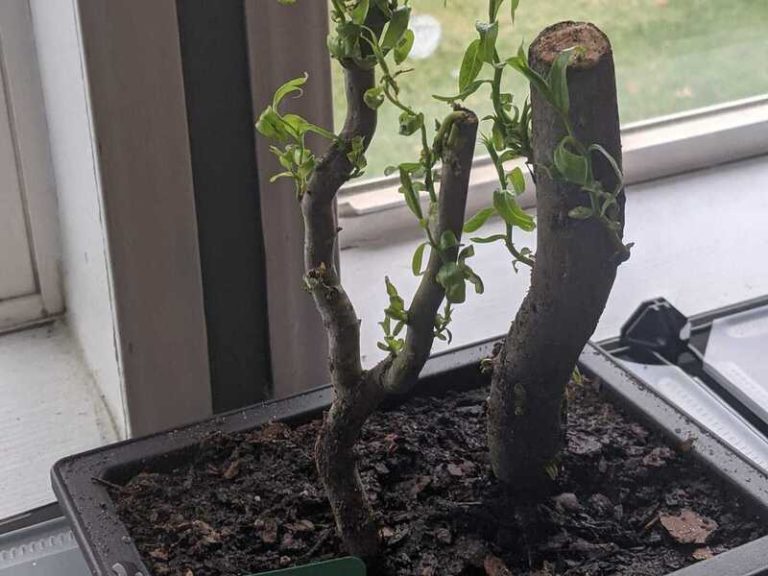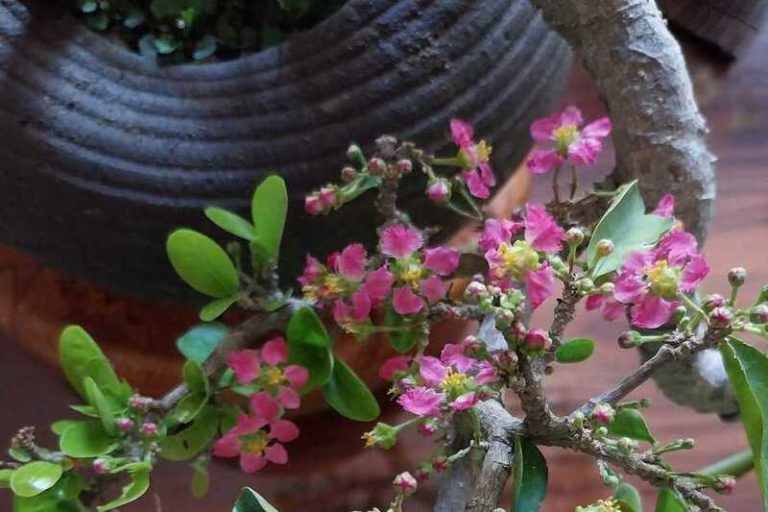Chamaecyparis Bonsai: An Exquisite Art Form in Miniature
Welcome to the fascinating world of Chamaecyparis Bonsai! This article is about the interesting art of growing Chamaecyparis bonsai trees also called Hinoki Cypress Bonsai. Whether you’re a beginner or a seasoned gardener, this article will help you learn how to grow and care for these charming little trees.
What is a Chamaecyparis Bonsai?
Chamaecyparis bonsai is a miniature tree that belongs to the Chamaecyparis genus of coniferous evergreen trees. Bonsai, as an art form, involves cultivating and shaping small trees to resemble mature, full-sized trees in nature. Chamaecyparis bonsai trees are highly regarded for their unique features, including scale-like foliage, vibrant colors, and distinct textures. These bonsai trees are grown and cared for in containers, allowing enthusiasts to create beautiful and captivating miniature landscapes. With proper care and maintenance, Chamaecyparis bonsai can thrive and bring the beauty of nature into any indoor or outdoor setting.
History and Origins of the Chamaecyparis Bonsai
Chamaecyparis bonsai may be traced back to ancient times in East Asia, including Japan and China. Bonsai is an art form with a thousand-year heritage.
Around 2,000 years ago, the discipline of nurturing and sculpting small trees, later known as bonsai, began in China. Chinese academics and painters were renowned to make penjing, or tiny landscapes, including trees, rocks, and other natural components. These early bonsai trees were frequently displayed in pots and valued for their aesthetic attractiveness.
During the Heian period (794-1185), the art of bonsai was then brought to Japan. The Japanese perfected the art by infusing their own cultural and aesthetic sensitivities. Bonsai became firmly ingrained in Japanese culture, and Zen Buddhist monks adopted it as a form of meditation and spiritual exercise.
During the Edo time (1603–1868), bonsai made from Chamaecyparis trees became very famous in Japan. During this time, the idea of bonsai started to take shape as we know it today. Chamaecyparis became a popular species for growing bonsai because of its beautiful leaves and unique qualities.
Chamaecyparis bonsai trees were meticulously shaped and pruned to resemble mature trees found in nature. The artistry involved in creating a Chamaecyparis bonsai was highly valued, and techniques such as wiring and grafting were employed to achieve desired forms and styles.
Over the centuries, the art of Chamaecyparis bonsai has continued to evolve and gain recognition worldwide. Bonsai enthusiasts and artists have contributed to the cultivation and refinement of Chamaecyparis bonsai by experimenting with various techniques and styles to create breathtaking miniature trees.
Today, Chamaecyparis bonsai is admired and practiced by bonsai enthusiasts and artists around the world. The history and origins of Chamaecyparis bonsai showcase the deep cultural significance and artistic expression associated with this ancient art form.
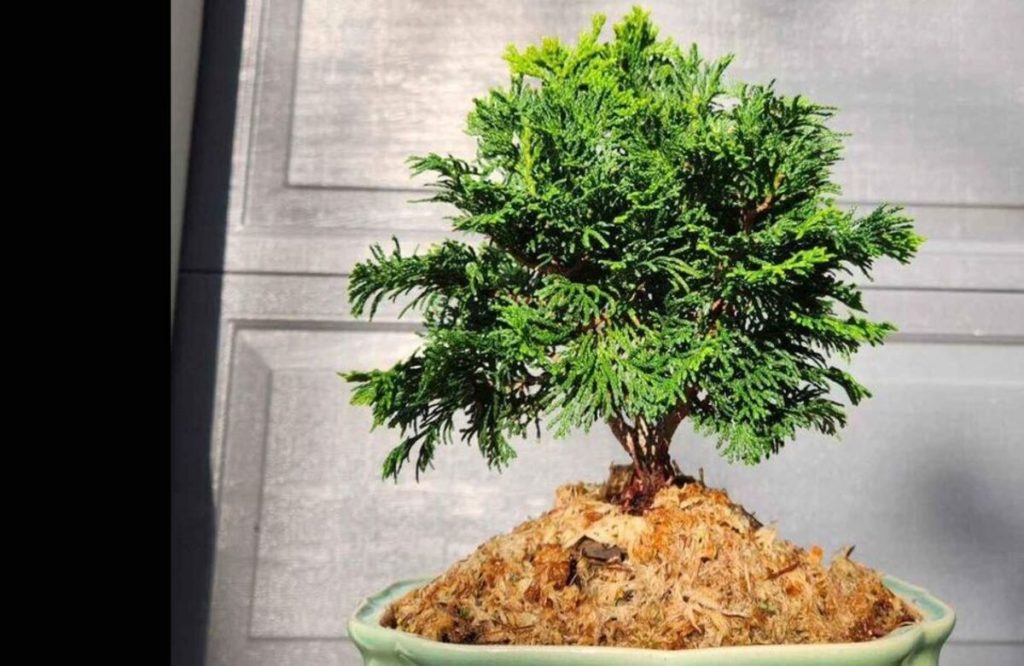
Bonsai strawberries and Their Symbolism
Chamaecyparis bonsai, like other bonsai trees, often carry symbolic meanings that add depth and significance to their presence. Here are some common symbolic interpretations associated with Chamaecyparis bonsai:
- Longevity: Chamaecyparis bonsai trees are known for their longevity. Their ability to thrive and endure for many years represents the concept of longevity and a long, fulfilling life. The ancient and weathered appearance of some mature Chamaecyparis bonsai trees further emphasizes this symbolism.
- Resilience: Chamaecyparis bonsai trees are hardy and resilient, able to withstand harsh environmental conditions and adapt to various circumstances. This resilience is seen as a symbol of strength and the ability to overcome challenges, inspiring individuals to persevere and stay strong in the face of adversity.
- Balance and Harmony: Bonsai, including Chamaecyparis bonsai, symbolize the balance and harmony between nature and human intervention. The meticulous shaping and pruning techniques employed to create the desired form of the tree reflect the harmony between the artistic vision of the cultivator and the natural beauty of the tree itself.
- Connection with Nature: Bonsai trees made from Chamaecyparis give people a sense of being in touch with nature and the natural world. They look like small versions of full-sized trees and serve as a reminder of the beauty and peace of nature. Taking care of and feeding a Chamaecyparis bonsai tree can also help you feel more connected to nature.
- Tranquility and Serenity: Chamaecyparis bonsai, with their calming green leaves and calm look, are a sign of inner peace and calmness. When a Chamaecyparis bonsai tree is in a room, it can create a calm mood that makes it easier to relax and be aware.
It’s important to note that the symbolic interpretations of Chamaecyparis bonsai may vary across different cultures and individuals. The personal significance and meaning attached to these bonsai trees can also be influenced by personal experiences and beliefs. Ultimately, the symbolism of Chamaecyparis bonsai is open to interpretation and can hold different meanings for different people.
Characteristics of the Chamaecyparis Bonsai
Chamaecyparis bonsai trees exhibit several distinct characteristics that contribute to their unique beauty and appeal. Here are some key characteristics of Chamaecyparis bonsai:
Foliage: Chamaecyparis bonsai trees feature scale-like foliage that ranges in color from bright greens to blue and yellow colors. The foliage is thick and has a delicate, feathery texture, which adds to the bonsai tree’s overall aesthetic attractiveness.
Bark: The bark of Chamaecyparis bonsai trees tends to be fibrous and textured, with varying shades of brown or gray. With time, the bark can develop an aged and weathered appearance, adding character and a sense of maturity to the tree.
Form and Structure: Chamaecyparis bonsai trees are known for their elegant and graceful forms. They can be styled into various bonsai forms, such as informal upright, cascade, slanting, or windswept. The branches are flexible and lend themselves well to shaping and wiring, allowing for artistic expression.
Size: Chamaecyparis bonsai trees are smaller replicas of their larger relatives. They generally range in height from a few inches to several feet, depending on their age and design. Because of their tiny size, they are suitable for indoor or outdoor exhibition in limited locations.
Evergreen Nature: Chamaecyparis bonsai trees are evergreen, meaning they retain their foliage year-round. This feature adds to their visual appeal and allows for year-round enjoyment of their beauty.
Resistance to Cold: Many Chamaecyparis species have a natural resistance to cold temperatures, making them suitable for bonsai cultivation in colder climates. This characteristic makes them a popular choice for bonsai enthusiasts in regions with harsh winters.
Fragrance: Some types of Chamaecyparis trees give off a nice scent that can be light or strong. Chamaecyparis trees are beautiful and easy to care for, and the smell adds to the total experience.
Chamaecyparis bonsai is beautiful and interesting to look at because of all of these things. Each tree has its own unique set of characteristics, and bonsai fans and artists often try to bring out and show off these features through careful care and style.
Types of Chamaecyparis Bonsai
There are several species and varieties of Chamaecyparis that are commonly used for bonsai cultivation. Here are some notable types of Chamaecyparis bonsai:
1. Chamaecyparis obtusa: Also known as Hinoki cypress, this species is native to Japan. It is highly valued for its fine-textured foliage, graceful branches, and distinctive reddish-brown bark. Chamaecyparis obtusa bonsai is known for its elegant, upright forms and is considered a classic choice in bonsai cultivation.
2. Chamaecyparis pisifera: Commonly known as Sawara cypress, this species is native to Japan and has a variety of cultivars with different foliage colors and textures. Chamaecyparis pisifera bonsai can display blue-green or yellow-green foliage, creating unique visual effects. It is prized for its flexibility in styling and ability to create various bonsai forms.
3. Chamaecyparis lawsoniana: Also known as Port Orford cedar or Lawson cypress, this species is native to North America. It features soft, feathery foliage in shades of green and has an appealing fragrance. Chamaecyparis lawsoniana bonsai can be shaped into elegant, upright forms or cascading styles, showcasing its graceful branches.
4. Chamaecyparis thyoides: Commonly known as Atlantic white cedar, this species is native to the eastern United States. It has fine, scale-like foliage that ranges from green to bluish-green. Chamaecyparis thyoides bonsai is known for its compact growth and can be styled into various forms, including informal upright or windswept styles.
5. Chamaecyparis nootkatensis: Also known as Alaska cedar or Nootka cypress, this species is native to the Pacific Northwest region of North America. It has a distinctive fragrance and features blue-green foliage. Chamaecyparis nootkatensis bonsai can be styled into striking cascading or semi-cascade forms, taking advantage of its naturally graceful branches.
These are just a few popular Chamaecyparis bonsai. Each species and type has its own unique traits and looks. This gives people who like bonsai a lot of ways to show their artistic style and tastes.
How to Grow a Chamaecyparis Bonsai
To guarantee the health and growth of a Chamaecyparis bonsai, adequate care and attention are required. Here’s how to cultivate a Chamaecyparis bonsai step by step:
Selecting the Right Chamaecyparis Bonsai Tree
- Choose a healthy Chamaecyparis bonsai tree from a reputable nursery or bonsai supplier.
- Look for a tree with well-developed branches, vibrant foliage, and a good root system.
Choosing the Right Pot and Soil
- Select a bonsai pot that provides adequate drainage and is suitable for the size and style of your Chamaecyparis bonsai.
- Use well-draining bonsai soil, preferably a mixture of organic and inorganic components, to ensure proper water retention and aeration.
Placement and Lighting
- Place your Chamaecyparis bonsai in a location that receives ample sunlight, preferably in a spot with indirect or filtered light.
- Protect the tree from extreme heat or cold drafts, as they can negatively impact its health.
Watering
- Water your Chamaecyparis bonsai regularly, ensuring that the soil remains slightly moist but not overly saturated.
- Adjust the watering frequency based on the environmental conditions, such as temperature and humidity.
Fertilization
- Feed your Chamaecyparis bonsai with a balanced, slow-release bonsai fertilizer during the growing season (spring to autumn).
- Follow the instructions on the fertilizer package for proper dosage and application.
Pruning and Shaping
- Prune your Chamaecyparis bonsai regularly to maintain its desired shape and encourage new growth.
- Use bonsai shears or sharp scissors to trim back excessive growth and remove any dead or unhealthy branches.
Wiring and Styling
- Use bonsai wire to gently shape the branches of your Chamaecyparis bonsai into the desired position.
- Be careful not to damage the branches while wiring, and periodically check for wire bites to avoid scarring.
Repotting
- Repot your Chamaecyparis bonsai every two to three years to refresh the soil and encourage root health.
- Prune back some of the roots during repotting to maintain a compact root system, and use fresh bonsai soil.
Protection and Winter Care
- Protect your Chamaecyparis bonsai from freezing temperatures during the winter by providing proper insulation or moving it to a sheltered area.
- Water sparingly during the dormant period, but ensure the soil does not dry out completely.
Ongoing Care and Maintenance
- Regularly monitor your Chamaecyparis bonsai for pests and diseases. Treat any issues promptly to prevent further damage.
- Continuously observe and adjust your care routine based on the specific needs of your Chamaecyparis bonsai.
Remember that growing a Chamaecyparis bonsai requires patience and ongoing care. Regular observation, adjustments, and nurturing will help your Chamaecyparis bonsai thrive and develop into a beautiful and captivating miniature tree.
Benefits of the Chamaecyparis Bonsai
Chamaecyparis bonsai has many benefits, both aesthetically and practically, that make it a popular choice among bonsai fans. Here are a few of the benefits of having a Chamaecyparis bonsai:
Aesthetically Pleasing: Chamaecyparis bonsai trees are beautiful and can make any place look better. Their small size, detailed leaves, and graceful shapes make them stand out and add a touch of natural beauty to both indoor and outdoor spaces.
Stress Relief and Relaxation: Caring for a Chamaecyparis bonsai can be a therapeutic and calming experience. The act of tending to the tree, pruning, and shaping it can provide stress relief and promote mindfulness. The serene presence of the bonsai itself can create a peaceful atmosphere, helping to reduce anxiety and promote relaxation.
Compact Size: Chamaecyparis bonsai trees are small in size, making them suitable for cultivation in limited spaces. Whether you live in an apartment or have a small garden, Chamaecyparis bonsai allows you to enjoy the beauty of nature and the art of bonsai without requiring extensive outdoor areas.
Longevity and Heritage: Bonsai trees made from Chamaecyparis can live for a long time if they are cared for well. They can be given from one generation to the next, becoming beloved family keepsakes. This gives the tree a feeling of history and a link to the past. It also gives people the chance to watch the tree grow and change over time.
Education and Learning: Growing and caring for a Chamaecyparis bonsai provides an educational experience. It allows individuals to learn about the principles of horticulture, plant anatomy, and bonsai techniques. The process of nurturing and shaping a bonsai tree can deepen one’s understanding of nature and cultivate a sense of responsibility and patience.
Conversation Starter and Decorative Element: Chamaecyparis bonsai trees serve as excellent conversation starters and decorative elements in homes, offices, or public spaces. Their unique and captivating presence can spark interest and admiration, becoming a focal point of discussions and adding a touch of natural beauty to any setting.
Connection with Nature: Chamaecyparis bonsai trees bring a bit of nature into your home, so you can feel connected to nature even if you live in a city. A Chamaecyparis bonsai can make us feel calm and peaceful because it reminds us of the beauty and unity of nature.
These are only a few of the advantages of cultivating a Chamaecyparis bonsai. Cultivating and caring a bonsai tree may be a highly satisfying experience, bringing a sense of fulfillment and respect for nature’s beauty and craftsmanship.
Displaying and Showcasing the Chamaecyparis Bonsai
Putting a Chamaecyparis bonsai on display and showing it is an art in itself that lets you show off its beauty and make a nice arrangement. Here are some suggestions on how to show off your Chamaecyparis bonsai:
1. Bonsai Stand or Table: Place your Chamaecyparis bonsai on a bonsai stand or table to elevate it and create a focal point. Choose a stand or table that complements the style and aesthetics of your bonsai and the surrounding space.
2. Indoor Display: If you’re displaying your Chamaecyparis bonsai indoors, ensure it receives ample indirect or filtered sunlight. Place it near a bright window or in a well-lit area, away from drafts or extreme temperature fluctuations.
3. Outdoor Display: If you want to show off your Chamaecyparis bonsai outside, choose a spot that gets the right amount of sunshine and is protected from bad weather. Consider using a table or stand for your bonsai that fits in with the natural surroundings.
4. Accent Plants and Decorative Elements: You can make your Chamaecyparis bonsai look better by adding decorative plants like moss or small flowering plants to the show. These contrasting parts can give the whole design more color, texture, and depth.
5. Display Seasonal Changes: Highlight the seasonal changes of your Chamaecyparis bonsai by incorporating seasonal elements into the display. For example, you can add miniature ornaments, seasonal flowers, or foliage to reflect the changing seasons.
6. Consider the Viewing Angle: You can show off the best parts of your Chamaecyparis bonsai from different views by rotating and repositioning it. Pay attention to the front (the side with the most appealing features) and make sure it is facing the watcher for the best visual effect.
7. Balance and Negative Space: Aim for a sense of balance and harmony in your display. Leave enough negative space around the bonsai to allow it to stand out and be appreciated. Negative space helps to accentuate the bonsai’s form and draws attention to its unique characteristics.
8. Bonsai Exhibition or Shows: Participate in bonsai exhibitions or shows to showcase your Chamaecyparis bonsai to a wider audience. These events provide opportunities to learn from other bonsai enthusiasts, receive feedback, and gain recognition for your artistry.
9. Regular Maintenance: Keep your Chamaecyparis bonsai well-maintained and groomed. Regularly trim and shape the tree to maintain its desired form and ensure that it remains visually appealing and healthy.
10. Information and Labeling: Consider providing information or labeling for your Chamaecyparis bonsai, especially if it is being displayed in a public setting. This can include the species, age, styling techniques, and any notable features or history of the tree, adding depth and educational value to the display.
By following these tips, you can effectively display and showcase your Chamaecyparis bonsai, allowing its beauty and artistry to be appreciated by yourself and others.
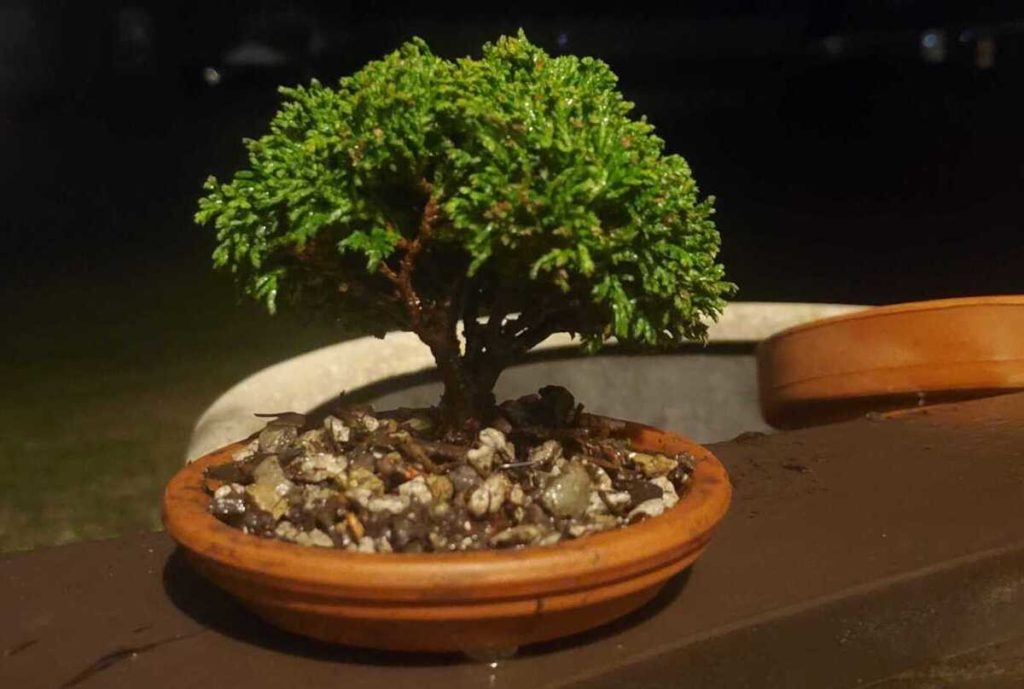
Styling and Design of a Chamaecyparis Bonsai
Styling and creating a Chamaecyparis bonsai is an artistic process that lets you make the tree into different shapes and put them together in a way that looks good. Here are some things to think about and ways to create and style your Chamaecyparis bonsai:
Research and Planning: Before starting the styling process, research the natural growth habits of Chamaecyparis species and study different bonsai styles and designs. This will help you determine the desired form and direction for your bonsai.
Branch Selection: Identify the main branches that will form the basic structure of your bonsai. Choose branches that are well-positioned, have good taper, and contribute to the overall design. Remove any unnecessary branches or those that disrupt the desired flow of the tree.
Wiring: Wiring is a crucial technique for shaping the branches of your Chamaecyparis bonsai. Use bonsai wire of an appropriate thickness for the branch’s size and flexibility. Wrap the wire carefully around the branch, starting from the base and working towards the tip. Gently bend and shape the branches into the desired position.
Pruning: Your Chamaecyparis bonsai needs to be pruned often to keep its shape and balance. Use sharp bonsai tools to cut back on too much growth, get rid of parts you don’t want, and encourage new branches to grow closer to the trunk. Pruning also gives the impression that the bonsai is old and grown up.
Styling Techniques: Chamaecyparis bonsai can be styled in various forms, such as formal upright (chokkan), informal upright (moyogi), slanting (shakan), cascading (kengai), or windswept (fukinagashi). Consider the natural characteristics of the tree, its size, and the overall aesthetic you wish to achieve when selecting a styling technique.
Branch Placement: Arrange the branches in a harmonious manner, ensuring a balanced distribution of foliage and open spaces. Create depth and visual interest by positioning branches at different heights and angles, giving the impression of depth and perspective.
Apex and Taper: Pay attention to the apex (the highest point of the tree) and ensure it is well-defined and in proportion to the overall design. Gradually reduce the thickness of branches as they move towards the apex, creating a natural taper that adds visual appeal and realism to the bonsai.
Consider Negative Space: Negative space, also known as “ma,” is the empty or open space within the bonsai design. It is as important as the tree itself and contributes to the overall aesthetic. Strive for a balanced distribution of foliage and negative space, creating a sense of harmony and visual balance.
Patience and Iteration: A Chamaecyparis tree is constantly being styled and designed. It might take a few years of growing, pruning, and fine-tuning to get the desired effect. Be patient and ready to make changes and improvements as the tree grows.
Remember that each Chamaecyparis bonsai is unique, and the styling process should reflect your artistic vision and the natural characteristics of the tree. With careful attention and artistic expression, you can create a beautifully styled Chamaecyparis bonsai that will bring joy and admiration for years to come.
How to Care for and Maintain a Chamaecyparis Bonsai
The health, growth, and life of a Chamaecyparis bonsai depend on how well it is taken care of and kept up. Here are some important tips for caring for it:
Watering:
- Regularly check the moisture level of the soil by gently inserting your finger into the soil up to the first knuckle. Water the bonsai when the soil feels slightly dry.
- Water thoroughly, allowing the water to soak through the entire root system. Ensure proper drainage to prevent waterlogging, as excessive moisture can lead to root rot.
Sunlight:
- Chamaecyparis bonsai trees thrive in bright, indirect sunlight. Place your bonsai in a location that receives at least 4-6 hours of sunlight per day.
- Protect the bonsai from intense midday sun during the summer months to prevent sunburn on the foliage.
Temperature and Humidity:
- Chamaecyparis bonsai prefer cool to moderate temperatures. They can tolerate a wide range of temperatures but should be protected from extreme heat or cold.
- Provide adequate humidity by misting the foliage regularly, especially during dry seasons or when the bonsai is kept indoors.
Fertilization:
- Apply a balanced, slow-release bonsai fertilizer during the growing season (spring to autumn) to provide essential nutrients for healthy growth.
- Follow the instructions on the fertilizer packaging for proper dosage and frequency. Avoid over-fertilization, as it can harm the tree.
Pruning and Trimming:
- Regularly prune your Chamaecyparis bonsai to maintain its shape, promote branching, and remove dead or diseased branches.
- Use sharp bonsai shears or scissors to make clean cuts, and avoid leaving stubs or creating wounds that can be prone to infection.
Wiring and Shaping:
- Wiring can be used to shape and position branches in your Chamaecyparis bonsai. Be careful not to wrap the wire too tightly to prevent damage to the branches.
- Monitor the growth and adjust or remove the wire before it cuts into the bark.
Repotting:
- Repot your Chamaecyparis bonsai every 2-3 years, usually in early spring before new growth begins.
- Trim the roots to maintain a healthy root system, and repot the tree in fresh bonsai soil to provide proper nutrients and drainage.
Pest and Disease Control:
- Regularly inspect your Chamaecyparis bonsai for signs of pests such as aphids, scale insects, or spider mites. Treat any infestations promptly using appropriate insecticides or insecticidal soaps.
- Monitor for common diseases like root rot or fungal infections and take necessary measures, such as improving drainage or applying fungicides, to prevent or treat them.
Protection during the Winter:
- Chamaecyparis bonsai trees are generally hardy, but some species may require protection during severe winter conditions.
- Place the bonsai in a sheltered location or use insulating materials like burlap or frost blankets to protect it from freezing temperatures.
Regular Observation and Care:
- Regularly observe your Chamaecyparis bonsai for any changes in growth, foliage color, or signs of stress. Adjust the care routine accordingly to address any issues promptly.
By following these care guidelines, you can ensure the health and vitality of your Chamaecyparis bonsai, allowing it to thrive and bring beauty to your living space for years to come.
Chamaecyparis Bonsai Care Sheet
| Aspect | Care Tips |
| Watering | Check soil moisture regularly and water when slightly dry. |
| Water thoroughly, ensuring proper drainage. | |
| Sunlight | Place in bright, indirect sunlight (4-6 hours per day). |
| Protect from intense midday sun to prevent foliage burn. | |
| Temperature | Tolerates a wide range of temperatures, but protect from extreme heat or cold. |
| Humidity | Maintain adequate humidity by misting the foliage. |
| Fertilization | Apply balanced, slow-release bonsai fertilizer during the growing season. |
| Follow instructions on the fertilizer packaging for dosage and frequency. | |
| Pruning and Trimming | Regularly prune to maintain shape and remove dead or diseased branches. |
| Wiring and Styling | Use wiring to shape branches, avoiding tight wraps that could damage the bark. |
| Repotting | Repot every 2-3 years in early spring before new growth starts. |
| Trim roots and use fresh bonsai soil with proper nutrients and drainage. | |
| Pest and Disease Control | Regularly inspect for pests and treat infestations promptly. |
| Monitor for diseases and take necessary measures to prevent or treat them. | |
| Winter Care | Protect from freezing temperatures using shelter or insulating materials. |
| Regular Maintenance | Regularly observe for any changes in growth or signs of stress. Adjust care accordingly. |
Make sure to change these tips based on what your Chamaecyparis bonsai needs and how the weather is where you live. Your bonsai tree will stay healthy and happy if you check on it and make changes on a regular basis.
Conclusion
We hope that this article has helped you learn more about Chamaecyparis bonsai, which is a fascinating subject. Remember to follow the basic care instructions, look into more advanced methods, and solve any problems that may come up. Growing Chamaecyparis bonsai is an ongoing process of learning and experimenting, and we invite you to dive into this beautiful art form. Happy growing!
FAQ:
Q: What is a Chamaecyparis Bonsai?
A: A Chamaecyparis bonsai is a miniature tree that is cultivated and trained to resemble its full-sized Chamaecyparis counterpart. It is a form of artistic expression that combines horticulture and aesthetic design to create a visually appealing and compact version of the Chamaecyparis tree.
Q: How big do Chamaecyparis Bonsai trees grow?
A: The size of a Chamaecyparis bonsai can vary depending on the species and the desired style. Some Chamaecyparis bonsai can grow to be a few feet tall, while others are kept smaller, reaching only a few inches in height.
Q: How long do Chamaecyparis Bonsai trees live?
A: With proper care, Chamaecyparis bonsai trees can live for several decades or even longer. The lifespan of a Chamaecyparis bonsai largely depends on factors such as the species, health maintenance, and the skill of the bonsai grower.
Q: What are the different types of Chamaecyparis Bonsai?
A: Chamaecyparis obtusa (Hinoki cypress), Chamaecyparis pisifera (Sawara cypress), and Chamaecyparis lawsoniana (Port Orford cedar) are among the species and cultivars that can be used to create bonsai. Each species possesses distinctive characteristics and growth patterns.
Q: How often should I water my Chamaecyparis Bonsai?
A: The watering frequency for a Chamaecyparis bonsai depends on factors such as the size of the pot, the climate, and the stage of growth. As a general guideline, check the moisture level of the soil regularly and water when it feels slightly dry to the touch. Avoid overwatering, which can lead to root rot.
Q: How much sunlight does a Chamaecyparis Bonsai need?
A: Chamaecyparis bonsai trees thrive in bright, indirect sunlight. They should be placed in a location that receives at least 4-6 hours of sunlight per day. However, it is important to protect them from intense midday sun to prevent foliage burn.
Q: When should I fertilize my Chamaecyparis Bonsai?
A: Fertilize your Chamaecyparis bonsai during the growing season, which is typically from spring to autumn. Use a balanced, slow-release bonsai fertilizer and follow the instructions on the packaging for dosage and frequency. Avoid over-fertilization, as it can harm the tree.
Q: How often should I prune my Chamaecyparis Bonsai?
A: The shape and health of your Chamaecyparis bonsai must be maintained with regular pruning. The frequency of pruning is determined by the tree’s growth rate and the intended form. Every few months, you should inspect and prune your bonsai, removing any deceased or undesirable branches.
Q: Can I wire and shape my Chamaecyparis Bonsai?
A: Yes, wiring and shaping are common techniques used in bonsai cultivation, including Chamaecyparis bonsai. Wiring helps to position and shape the branches, giving your bonsai the desired form. However, be cautious not to wrap the wire too tightly to avoid damaging the branches.
Q: When should I repot my Chamaecyparis Bonsai?
A: Repotting is typically done every 2-3 years for Chamaecyparis bonsai. The best time to repot is in the early spring, just before the new growth starts. Trimming the roots during repotting helps maintain a healthy root system, and using fresh bonsai soil provides proper nutrients and drainage for the tree.
Q: How do I protect my Chamaecyparis Bonsai from pests and diseases?
A: Regular inspection is important to identify any pests or diseases on your Chamaecyparis bonsai. Treat infestations promptly using appropriate insecticides or insecticidal soaps. Monitor for common diseases like root rot or fungal infections and take necessary measures, such as improving drainage or applying fungicides, to prevent or treat them.
Q: What care should I provide to my Chamaecyparis Bonsai during the winter?
A: Chamaecyparis bonsai trees are generally hardy, but some species may require protection during severe winter conditions. Place the bonsai in a sheltered location or use insulating materials like burlap or frost blankets to protect it from freezing temperatures.
Q: How do I maintain my Chamaecyparis Bonsai on a regular basis?
A: Regular maintenance involves observing the growth and health of your Chamaecyparis bonsai. Monitor for any changes in growth, foliage color, or signs of stress. Adjust watering, pruning, and other care routines accordingly. Regularly clean the foliage, remove dead leaves, and ensure proper air circulation around the tree.
Also Read:



